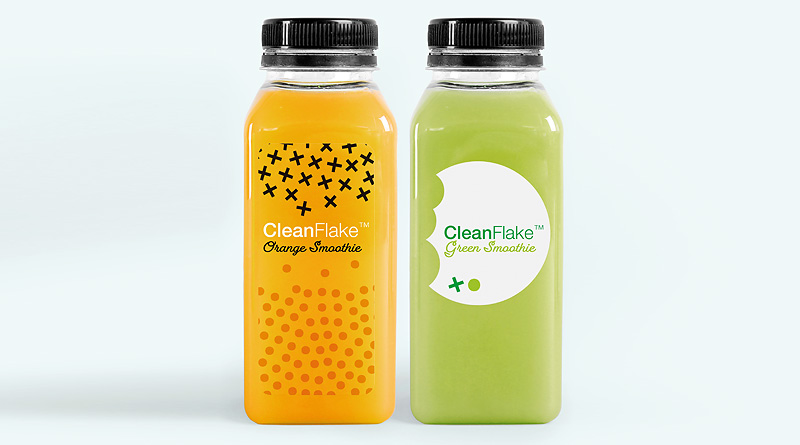Sustainable labelling – using PET
by Liselotte den Ouden (Product Manager Film) and Jenny Wassenaar (Compliance & Sustainability Director), Avery Dennison
There is no doubt that sustainable packaging and waste reduction have become key business priorities. The search for solutions that can boost a brand’s eco-credentials is gathering pace. Major gains are possible when brands get things right. Consumers pay particularly close attention to packaging, and there are significant environmental improvements to be made and communicated. Useful brand messages emerge from initiatives that create a truly circular economy. Labels are a highly visible part of packaging, so they play a key role.
The label recycling challenge
Recycling waste from different stages of the labelling process is complex, especially when seeking to create useful by-products or closing the loop entirely. Even the word ‘recyclable’ is sometimes misleading because some recyclable products will end up in landfill, as things stand. A viable end-to-end recycling solution has to look at real-world performance of all the different components of a package. This means considering sourcing of materials, how much is being used, and the actual end-of-life destination. The ultimate goal, of course, is zero waste.
Better label materials
A standard self-adhesive label, once it has been dispensed onto a package or product, comprises a facestock and an adhesive. Before dispensing, it is also held on a release liner. Sustainability considerations often start with the facestock, as the most visible element for consumers. Certification is helpful here, showing that materials are from renewable resources. Materials can also be shown to contain recycled material, and to be recyclable themselves. 95%+ of Avery Dennison’s paper facestock volume within the EU is already FSC-certified, and some of the more specialised products include facestocks made from grape or sugar cane waste – a great way to promote brand messaging in particular segments, such as wine and spirits.
Beyond the facestock, the adhesive matters too. It makes an impact both during manufacture and when entering the recycling stream, with which an adhesive should, ideally, be fully compatible. It should facilitate removal of itself from the stream (see CleanFlake technology, below).
Release liners can make up 35% of the laminate, so improvements in this area can have a strong impact on sustainability. In the past, liners have posed a difficult recycling challenge; especially silicone-coated ‘glassine’ materials. Significant improvements have already been made with glassine recycling but one of the most important developments, for both sustainability and productivity, is that many label liners are also now made from PET.
The benefits of PET release liners
Sustainability gains from PET liners begin with the fact that they are thinner. Using 30 µm PET liner, or the 23 µm version, reduces the amount of material needed, compared with a conventional glassine liner. Pressure-sensitive laminates can therefore be made thinner, which means more labels on an equal size roll and so fewer trucks on the road. More meters of labels on a longer roll also means longer production runs, with less startup and changeover waste.
So far, so good, but PET comes into its own still further when taking recycling into account. If care is taken to remove silicone, and to keep the PET separate from other plastics, the liners can be recycled into useful products such as thermoformable sheets, for making trays, fibre or strapping. Avery Dennison has an expanding program in place to collect and recycle PET liners and has also launched the first commercially-available recycled content PET (rPET) label liner, which is made from carefully selected post-consumer waste (PCW).
Dealing with post-consumer waste
PET can play an important role in finding applications for PCW. CleanFlake, a recent Avery Dennison innovation, has closed the loop for PET packaging; the new technology won the 2019 FINAT Recycling and Sustainability award. CleanFlake facilitates clean separation of labels from PET containers in the conventional recycling process, leaving high quality PET flakes behind. The reduced levels of contamination from label facestock, ink and adhesive allow the production of food-grade recycled PET (rPET), suitable for making PET bottles or other food packaging – new bottles made from old bottles. A key benefit of CleanFlake technology is that it does not compromise on productivity or shelf appeal. It also meets widely varying recycling standards in many European countries, including PETcore and EPBP EU.
Additional sustainability benefits can be achieved with the right choice of label release liner. For example, a million square metres of labels on an rPET23 liner (which contains 30% post-consumer waste) can reduce resource use (compared with a virgin PET23 liner) as follows: fossil fuel -30% (59 barrels of oil), energy use -11% (equivalent to 4.8 households for a year) and emission of Greenhouse gases -14% (equivalent to taking 4.2 cars off the road per year).
The future
Further cost-effective improvements to sustainability are urgently needed. Waste is an inevitable by-product of the labelling process but we must prevent large volumes going to landfill or incineration. Realistic ways to source and recycle responsibly do exist; the options offered by Avery Dennison are expanding rapidly, in collaboration with brand owners, packaging suppliers and recyclers. Once all parties in the supply chain are properly engaged – and the right materials made available – labelling can become part of the solution to the sustainability challenge.

